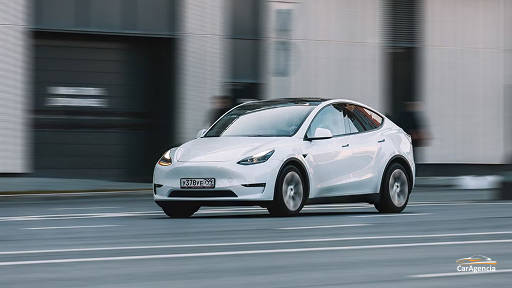 Kiran C
Kiran C
It can be easy to get excited about electric vehicles (EVs). Peace and quiet, less impact on the planet, and all the cool technology are an attractive combination, but there remains one big question for both new and existing EV owners - what happens if speed increases, can I still go the same distance?
While it feels good to travel quickly down the highway, speed can dramatically influence how far you can travel on a single charge.
A recent experiment conducted by the Collaborative Research Group with the Lucid Air, Kia EV9, and Subaru Forester explored this question. The study focused on key factors such as:
Aerodynamic resistance
Steady-state driving
Range differential across speeds
The findings provide valuable insights and practical steps for EV owners to better manage their range.
Before diving into the results, it’s important to understand the role of aerodynamics:
Aerodynamic Resistance: As a vehicle travels faster, it encounters more aerodynamic resistance, which is the force resisting the motion of the vehicle through the air.
Exponential Increase: At higher speeds, aerodynamic force increases exponentially. This means that doubling your speed doesn’t just double the drag—it makes the car work significantly harder to maintain pace.
To test the impact of speed on range, a series of field experiments were conducted on a closed test track. The vehicles tested included:
Lucid Air: A low-slung luxury sedan.
Kia EV9: A hefty SUV.
Subaru Forester: A gas-powered compact SUV for comparison.
The tests measured performance at steady cruising speeds of 35 mph, 55 mph, 75 mph, and 95 mph.
The results revealed two major conclusions:
Range Loss at Higher Speeds:
The Lucid Air lost 88 miles of range when speed increased from 55 mph to 75 mph.
The Kia EV9 lost even more—109 miles over the same speed increase.
The Subaru Forester, with its additional gearing, lost only 9% of its range from 35 mph to 55 mph, making it less affected by higher speeds.
EVs and Steady-State Driving:
EVs perform worse during steady-state high-speed driving due to the lack of regenerative braking benefits.
Regenerative braking, which recovers energy during deceleration, is more effective in stop-and-go or mixed driving conditions.
The range losses at higher speeds can be attributed to:
No Coasting or Regenerative Braking: In steady-state driving, EVs cannot recover energy, unlike in stop-and-go traffic.
Energy Reserve Usage: At prolonged high speeds, EVs rely solely on their energy reserves, leading to faster depletion.
This explains why highway range tests for EVs often fall short of EPA estimates.
Here are some practical tips to help EV drivers minimize range loss:
Choose Routes Wisely
Opt for routes with lower average speeds.
Avoid stop-and-go traffic where possible.
Use Eco Modes
Most EVs have eco-driving modes that limit power usage and improve efficiency.
Turn on eco mode for long trips to maximize range.
Monitor State of Charge
Start your drive with a higher state of charge, especially for high-speed trips.
Studies show performance tapers with a lower state of charge.
Reduce Aerodynamic Drag
Remove roof racks, bike racks, or other accessories when not in use.
Keep windows up at highway speeds to improve efficiency.
Maintain Tires
Ensure correct tire pressure to reduce rolling resistance.
Proper tire maintenance improves efficiency across all speeds.
Speed has a proportional relationship with EV range, and the effects of aerodynamic drag are more pronounced in EVs compared to gasoline-powered vehicles. Steady-state driving at high speeds works against the design of EVs, leading to significant range losses.
Owning an EV requires adapting your driving habits, but the rewards include excellent driving technology and reduced environmental impact. With good planning and an understanding of speed’s impact, EV drivers can make the most of their vehicles and enjoy the journey.